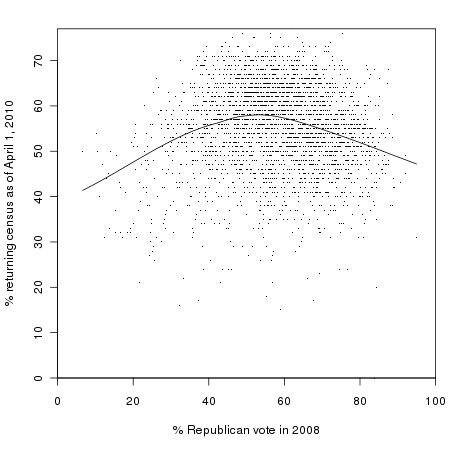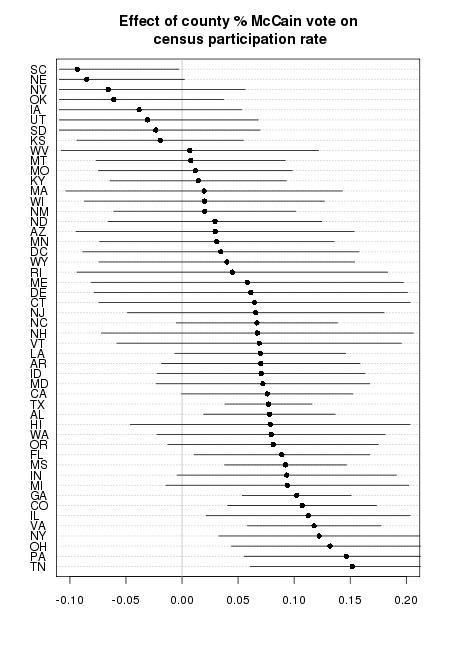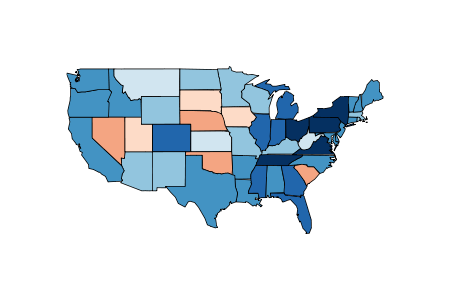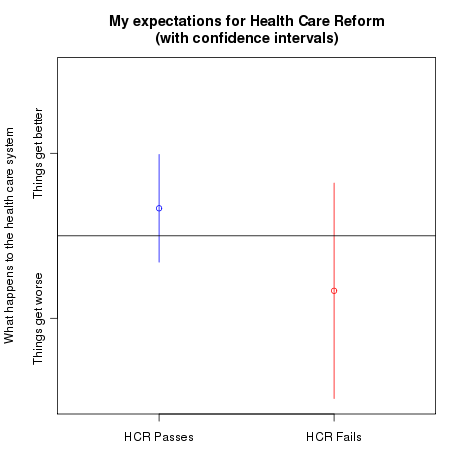Henry Farrell has a nice discussion of some recent debates about steampunk novels. He refers to Charles Stross's complaint that much steampunk is so infatuated with gadgets and elites that it willfully turns away from the misery and exploitation that characterized real Victorian capitalism. He also approvingly notes Cosma Shalizi's argument that "The Singularity has happened; we call it 'the industrial revolution'". Farrell builds on this point by noting that "one of the skeins one can trace back through modern [science fiction] is a vein of sociological rather than scientific speculation, in which events happening to individual characters serve as a means to capture arguments about what is happening to society as a whole". The interesting thing about the 19th century, then, is that it is a period of rapid social transformation, and SF is an attempt to understand the implications of such rapid change. In a similar vein, Patrick Neilsen Hayden quotes Nietzsche: "The press, the machine, the railway, the telegraph are premises whose thousand-year conclusion no one has yet dared to draw."
This relates to some of my own long-gestating speculations about the relationship between science fiction and social science. My argument is that both fields can be understood as projects that attempt to understand empirical facts and lived experience as something which is shaped by abstract--and not directly perceptible--structural forces. But whereas social science attempts to derive generalities about society from concrete observations, SF derives possible concrete events from the premise of certain sociological generalities. Note that this definition makes no reference to the future or the past: science fiction can be about the past, like steampunk, but it is the working out of an alternative past, which branches off from our own timeline according to clearly differences in social structure and technology. If social science is concerned with constructing a model (whether quantitative or qualitative) on the basis of data, then we can think of a science-fictional world by analogy to a prediction from an existing model, such as a fitted statistical model: any particular point prediction reflects both the invariant properties of the model's parameters and the uncertainty and random variation that makes individual cases idiosyncratic.
The following are a few semi-related musings on this theme.
I. The Philosophy of Posterity
One kind of sociologically-driven science fiction is the working out of what I will call a theory of posterity. Posterity, here, is meant to imply the reverse of history. And a theory of posterity, in turn, is an inversion of the logic of a theory of history, or of the logic of social science more generally.
History is a speculative enterprise in which the goal is to construct an abstract conception of society, derived from its concrete manifestations. That is, given recorded history, the historian attempts to discern the large, invisible social forces that generated these events. It is a process of constructing a story about the past, or as Benjamin puts it:
To articulate what is past does not mean to recognize “how it really was.” It means to take control of a memory....
Or consider Benjamin's famous image of the "angel of history":
His face is turned towards the past. Where we see the appearance of a chain of events, he sees one single catastrophe, which unceasingly piles rubble on top of rubble and hurls it before his feet. He would like to pause for a moment so fair [verweilen: a reference to Goethe’s Faust], to awaken the dead and to piece together what has been smashed. But a storm is blowing from Paradise, it has caught itself up in his wings and is so strong that the Angel can no longer close them. The storm drives him irresistibly into the future, to which his back is turned, while the rubble-heap before him grows sky-high.
One way to read this is that the pile of rubble is the concrete accumulation of historical events, while the storm represents the social forces--especially capitalism, in Benjamin's reading--which drive the logic of events.
But consider what lies behind the angel of history: the future. We cannot know what, concretely, will happen in the future. But we know about the social forces--the storm--which are pushing us inexorably into that future. Herein lies the distinction between the study of history and the study of posterity: a theory of posterity is an attempt to turn the angel of history around, and to tell us what it sees.
Where the historian takes empirical data and historical events and uses them to build up a theory of social structure, a theory of posterity begins with existing social forces and structures, and derives possible concrete futures from them. The social scientist must pick through the collection of empirical details--whether in the form of archives, ethnographic narratives, or census datasets--and decide which are relevant to constructing a general theory, and which are merely accidental and contingent features of the record. Likewise, constructing an understanding of the future requires sorting through all the ideas and broad trends and institutions that exist today, in order to determine which will have important implications for later events, and which will be transient and inconsequential.
Because it must construct the particular out of the general, the study of posterity is most effectively manifested in fiction, which excels in the portrayal of concrete detail, whereas the study of the past takes the form of social science, which is built to represent abstractions. Fictional futures are always preferable to those works of "futurism" which attempt to directly predict the future, obscuring the inherent uncertainty and contingency of that future, and thereby stultifying the reader. Science fiction is to futurism what social theory is to conspiracy theory: an altogether richer, more honest, and more humble enterprise. Or to put it another way, it is always more interesting to read an account that derives the general from the particular (social theory) or the particular from the general (science fiction), rather than attempting to go from the general to the general (futurism) or the particular to the particular (conspiracism).
Science fiction can be understood as a way of writing that adopts a certain general theory of posterity, one which gives a prominent role to science and technology, and then describes specific events that would be consistent with that theory. But that generalization conceals a great diversity of different understandings. And so to understand a work of speculative fiction, therefore, it helps to understand the author's theory of posterity.
II. Charles Stross: the Sigmoid Curve and Punctuated Equilibrium
The work of Charles Stross provides an illuminating case study. Much of his work deals with the near-future, and thus is centrally concerned with extrapolating current social trends in various directions. His most acclaimed novel, Accelerando, is an account of "the singularity": the moment when rapidly accelerating technological progress gives rise to incomprehensibly post-human intelligences.
Like most science fiction, Stross's theory of posterity begins from the interaction of social structure and technology. This is rather too simple a formulation, however, as it tends to imply a sort of technological determinism, where technical developments are considered to be a process that goes on outside of society, and affects it as an external force. Closer to the spirit of Stross--and most good SF--is the following from Marx:
Technology discloses man’s mode of dealing with Nature, the process of production by which he sustains his life, and thereby also lays bare the mode of formation of his social relations, and of the mental conceptions that flow from them.
This formulation, to which David Harvey is quite partial, reveals that technology is not an independent "thing" but rather an intersection of multiple human relationships--the interchange with nature, the process of production (and, we might add, reproduction), and culture.
Stross's theory of posterity places technology at the nexus of capital accumulation, consumer culture, and the state, in its function as the guarantor of contract and property rights. Thus in Accelerando, and also in books like Halting State, financial engineering, video games, hackers, intellectual property, and surveillance interact, and all of them push technology forward in particular directions. This is the mechanism by which Stross arrives at his ironic dystopia in which post-human intelligence takes the form of "sentient financial instruments" and "alien business models".
In surveying this vision, a question arises about the way technological development is portrayed in any theory of posterity. It has been a common trope in science fiction to simply take present-day trends and extrapolate them indefinitely into the future, without regard for any major change in the direction of development. Stross himself has observed this tendency: in the first half of the 20th century, the most rapid technological advances came in the area of transportation. People projected this into the future, and consequently science fiction of that era tended to produce things like flying cars, interstellar space travel, etc.
The implicit model of progress that gave rise to these visions was one in which technology develops according to an exponential curve:

The exponential model of development also underpins many popular conceptions of the technological singularity, such as that of Ray Kurzweil. As we reach the rapidly upward-sloping part of the curve, the thinking goes, technological and social change becomes so rapid as to be unpredictable and unimaginable.
But Stross observes that the exponential model probably misconstrues what technical change really looks like. In the case of transportation, he notes that the historical pattern fits a different kind of function:
We can plot this increase in travel speed on a graph — better still, plot the increase in maximum possible speed — and it looks quite pretty; it's a classic sigmoid curve, initially rising slowly, then with the rate of change peaking between 1920 and 1950, before tapering off again after 1970. Today, the fastest vehicle ever built, NASA's New Horizons spacecraft, en route to Pluto, is moving at approximately 21 kilometres per second — only twice as fast as an Apollo spacecraft from the late-1960s. Forty-five years to double the maximum velocity; back in the 1930s it was happening in less than a decade.
Below is the sigmoid curve:

It might seem as though Accelerando, at least, isn't consistent with this model, since it looks more like a Kurzweil-style exponential singularity. But another way of looking at it is that the sigmoid curve simply plays out over a very long time scale: the middle parts of the book portray incredibly rapid changes, but by the end of the book the characters once again seem to be living in a world of fairly sedate development. This environment is investigated further in the followup Glasshouse, which pushes the singularity story perhaps as far as it will go--to the point where it begins to lose all contact with the present, rendering further extrapolation impossible.
What's most interesting about the sigmoid-curve interpretation of technology, however, is what it implies about the interaction between different technological sectors over the course of history. Rather than ever-accelerating progress, the history of technology now looks to be characterized by something like what paleontologists call Punctuated Equilibrium: long periods of relative stasis, interspersed with brief spasms of rapid evolution. If history works this way, then projecting the future becomes far more difficult. The most important elements of the present mix of technologies are not necessarily the most prominent ones; it may be that some currently insignificant area will, in the near future, blow up to become the successor to the revolution in Information Technology.
In a recent speech, Stross futher elaborates on this framework as it relates to present trends in technology. He goes farther than in previous work in rejecting a key premise of the singularity, which is that the exponential growth in raw computing power will continue indefinitely:
I don't want to predict what we end up with in 2020 in terms of raw processing power; I'm chicken, and besides, I'm not a semiconductor designer. But while I'd be surprised if we didn't get an order of magnitude more performance out of our CPUs between now and then — maybe two — and an order of magnitude lower power consumption — I don't expect to see the performance improvements of the 1990s or early 2000s ever again. The steep part of the sigmoid growth curve is already behind us.
However, Stross notes that even as the acceleration in processor powers drops, we are seeing a distinct kind of development based on ubiqitous fast wireless Internet connections and portable computing devices like the iPhone. The consequence of this is to erode the distinction between the network and "real" world:
Welcome to a world where the internet has turned inside-out; instead of being something you visit inside a box with a coloured screen, it's draped all over the landscape around you, invisible until you put on a pair of glasses or pick up your always-on mobile phone. A phone which is to today's iPhone as a modern laptop is to an original Apple II; a device which always knows where you are, where your possessions are, and without which you are — literally — lost and forgetful.
This is, essentially, the world of Manfred Macx in the opening chapters of Accelerando. It is incipient in the world of Halting State, and its further development will presumably be interrogated in that book's sequel, Rule 34.
III. William Gibson and the Technicians of Culture
William Gibson is another writer who has considered the near future, and his picture in Pattern Recognition and Spook Country maps out a consensus future rather similar to Stross's. In particular, the effacing of the boundary between the Internet and everyday life is ever-present in these books, right down to a particular device--the special glasses which project images onto the wearer's environment--that plays a central role for both writers.
Yet technology for Gibson is embedded in a different social matrix. The state and its bureaucracy are less present than in Stross; indeed, Gibson's work is redolent of 1990's style imaginings of the globalized world, after the withering of the nation-state. Capital, meanwhile, is ever-present, but its leading edge is quite different. Rather than IP cartels or financiers or game designers, the leading force in Gibson's world is the culture industry, and in particular advertizing and marketing.
This is in keeping with Gibson's general affinity for, and deep intuitive understanding of, the world of consumer commodities. Indeed, his books are less about technology than they are meditations on consumer culture and its objects; the loving way in which brands and products are described reveals Gibson's own infatuation with these commodities. Indeed, his instincts are so well tuned that an object at the center of Pattern Recognition turned out to be a premonition of an actual commodity.
This all leads logically to a theory of the future in which changes in society and technology are driven by elements of the culture industry: maverick ad executives, cool-hunters, former indie-rock stars and avant-garde artists all figure in the two recent works. Gibson maintains a conception of the high culture-low culture divide, and the complex interrelation between the two poles, which is lacking in Stross. The creation and re-creation of symbols and meaning is the central form of innovation in his stories.
Insofar as Gibson's recent writing is the working out of a social theory, its point of departure is Fredric Jameson's theorization of postmodern capitalist culture. Jameson observed back in the 1970's that one of the definitive characteristics of late capitalism was that "aesthetic production today has become integrated into commodity production generally". Gibson, like Stross and other science fiction writers, portrays the effects of rapid change in the technologies of production, but in this case it is the technologies of aesthetic production rather than the assembly line, transportation, or communication.
And it does indeed seems that cultural innovation and recombination has accelerated rapidly in the past few decades. But in light of Stross, the question becomes: are we reaching the top of the sigmoid curve? It sometimes seems that we are moving into a world where Capital is more an more concerned with extracting rents from the control of "intellectual property" rather than pushing toward any kind of historically progressive technological or even cultural innovation. But I will save the working out of that particular theory of posterity for another post.





